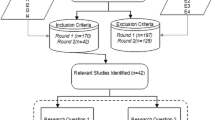Abstract
Instructional technologies have the potential to help highereducation faculty address increasing demands on their time and energy. Thisstudy investigated technology use by faculty at medium-sized, publicuniversity in the midwestern United States. Because a number of studies haveshown gender differences in technology use, survey data were analyzed alonggender lines. Results showed that males rated their knowledge and experiencewith some innovative technologies higher than did females. For frequency ofuse, no significant differences were found, with the exception of video,where females indicated slightly more frequent use. Both rated technologiesas important to instruction. For factors influencing technology use, femalesrated time to learn a technology, increased student learning, ease of use,training, and available information in discipline as more important than didmales. Such incentives as release time, merit pay, contribution to promotionand tenure, monetary rewards, and recognition by the university were ratedmore important by women, as were the barriers of lack of time and lack ofcontribution to professional advancement. These findings suggest that genderdifferences in technology use by university faculty may exist and need to beaddressed.
Similar content being viewed by others
References
Albright, M.J. and Graf, D.L. (1992) . ‘Instructional technology and the faculty member’, in Albright, M.J. and Graf, D.L. (eds.) , Teaching in the Information Age: The role of educational technology, (New Directions for Teaching & Learning, no. 51) . pp. 7-16.
Barron, D.D. (1996) . ‘It began with Hypatia and Ada: Helping girls bridge the technology gender gap’, School Library Media Activities Monthly12(7) , 50.
Benston, M.L. (1988) . ‘Women's voices/men's voices: Technology as language’, in C. Kramarae (ed.) Technology and Women's Voices(pp. 15-28) . New York: Routledge and Kegan Paul.
Brecher, D. (1985) . Women's Computer Literacy Handbook. New York: Plume.
Cheek, D.W. and Agruso, S. (1995) . ‘Gender and equity issues in computer-based science assessment’, Journal of Science Education and Technology4, 75-79.
Chen, M. (1986) . ‘Gender and computers: The beneficial effects of experience on attitudes’, Journal of Educational Computing Research2, 265-281.
Collis, B.A. (1985) . ‘Sex differences in secondary school students' attitudes towards computers’, Computing Teacher12(7) , 33-36.
Collis, B.A. (1989) . ‘National trends in computer use among Canadian secondary school students: Implications for cross-cultural analyses’, Journal of Research on Computing in Education22, 77-89.
Durndell, A. (1990) . ‘Why do female students tend to avoid computer studies?’ Research in Science & Technological Education8, 163-170.
Fife-Schaw, C., Breakwell, G.M., Lee, T. and Spencer, J. (1987) . ‘Attitudes towards new technology in relation to scientific orientation at school: A preliminary study of undergraduates’, British Journal of Educational Psychology57, 114-121.
Hinkle, D.E., Wiersma, W. and Jurs, S.G. (1988) . Applied Statistics for the Behavioural Sciences. Boston: Houghton Mifflin.
Jacobson, M.J. and Weller, M.H. (1987-88) . ‘A profile of computer use among the University of Illinois Humanities faculty’, Journal of Educational Technology Systems16, 83-98.
Kay, R.H. (1992) . ‘Understanding gender differences in computer attitudes, aptitude, and use: An invitation to build theory’, Journal of Research on Computing in Education25, 159-171.
Kirk, D. (1992) . ‘Gender issues in information technology as found in schools: Authentic/ synthetic/fantastic? Educational Technology32(4) , 28-31.
Krejcie, R.V. and Morgan, D.V. (1970) . ‘Determining sample size for research activities’, Educational and Psychological Measurement30, 607-610.
Morris, D.C. (1988-89) . ‘A survey of age and attitudes toward computers’, Journal of Educational Technology Systems17, 73-78.
Morritt, H. (1996) . ‘Women and computer based technologies: A feminist perspective’. Paper presented at the annual meeting of The American Educational Research Association, New York, April 8-12, 1996.
Nelson, C.S. and Watson, J.A. (1995, Fall) . ‘The computer gender gap: Children's attitudes, performance and socialization’, Montessori LIFE, pp. 33-35.
Okebukola, P.A. (1993) . ‘The gender factor in computing anxiety and interest among some Australian high school students’, Educational Research35, 181-188.
Reinen, I.J. and Plomp, T. (1993) . ‘Some gender issues in educational computer use: Results of an international comparative survey’, Computers and Education20, 353-365.
Shashaani, L. (1994) . ‘Gender-differences in computer experience and its influence on computer attitudes’, Journal of Educational Computing Research11, 347-367.
Siann, G., Macleod, H., Glissov, P. and Durndell, A. (1990) . ‘The effect of computer use on gender differences in attitudes to computers’, Computers in Education14, 121-131.
Stasz, C., Shavelson, R.J. and Stasz, C. (1985) . ‘Teachers as role models: Are there gender differences in microcomputer-based mathematics and science instruction?’, Sex Roles13, 149-164.
Statistical Abstract of the United States. (1996) . Washington, DC: U.S. Department of Commerce.
Wajcman, J. (1991) . Feminism Confronts Technology. University Park, PA: Pennsylvania State University.
White, M.A. and Righi, C. (1991) . ‘Software tools for students in higher education: A national survey of use’, Educational Technology31(10) , 45-47.
Wilson, F. (1992) . ‘Language, technology, gender and power’, Human Relations45, 883-904.
Author information
Authors and Affiliations
Rights and permissions
About this article
Cite this article
Spotts, T.H., Bowman, M.A. & Mertz, C. Gender and use of instructional technologies: A study of university faculty. Higher Education 34, 421–436 (1997). https://doi.org/10.1023/A:1003035425837
Issue Date:
DOI: https://doi.org/10.1023/A:1003035425837




